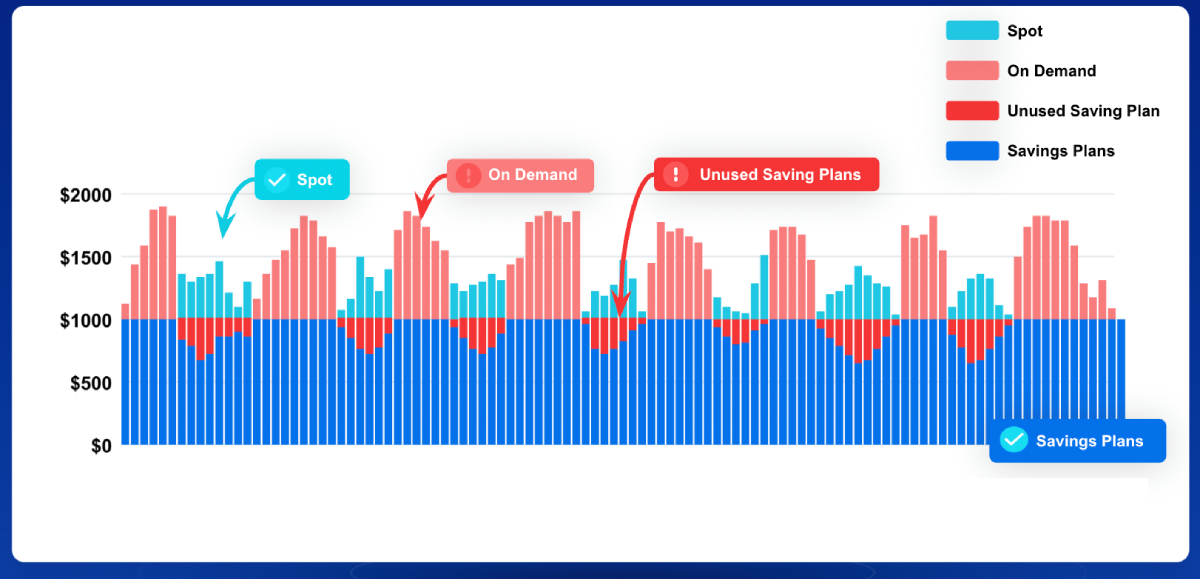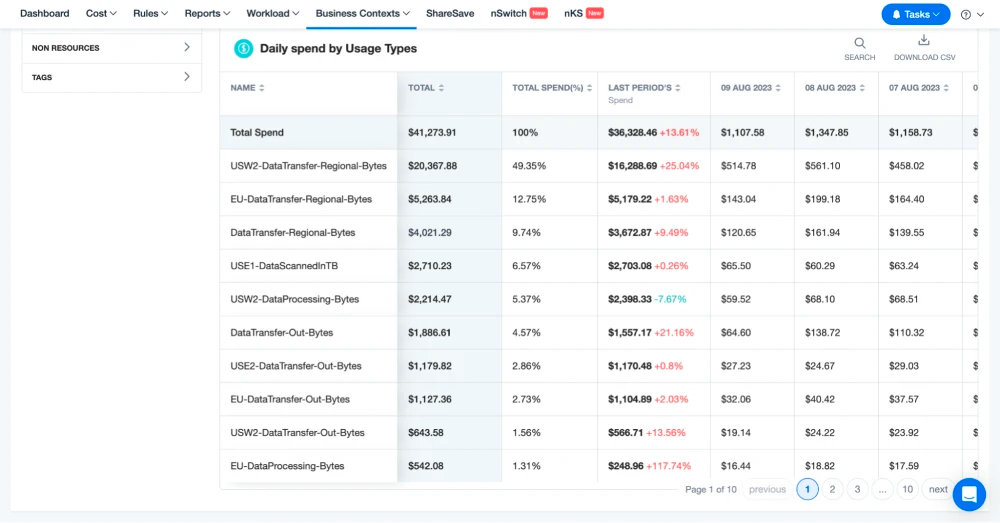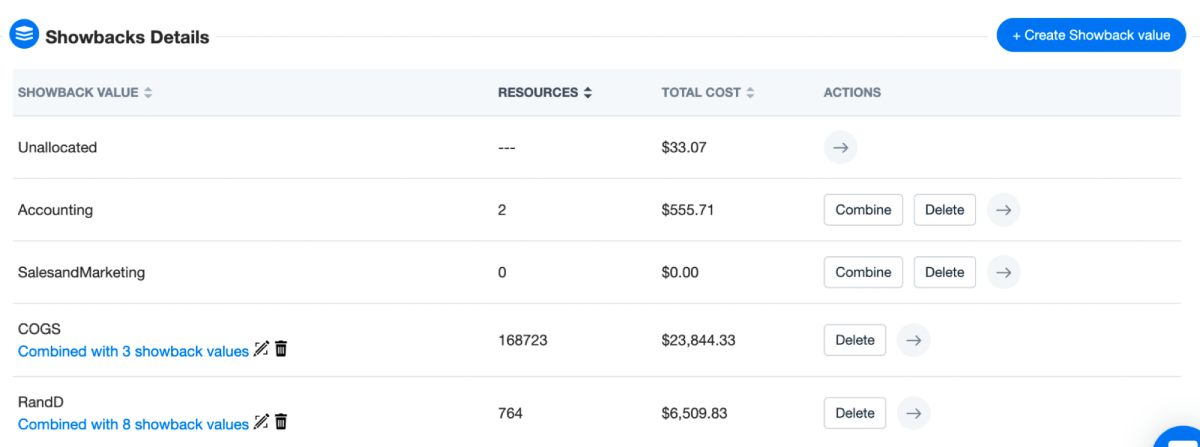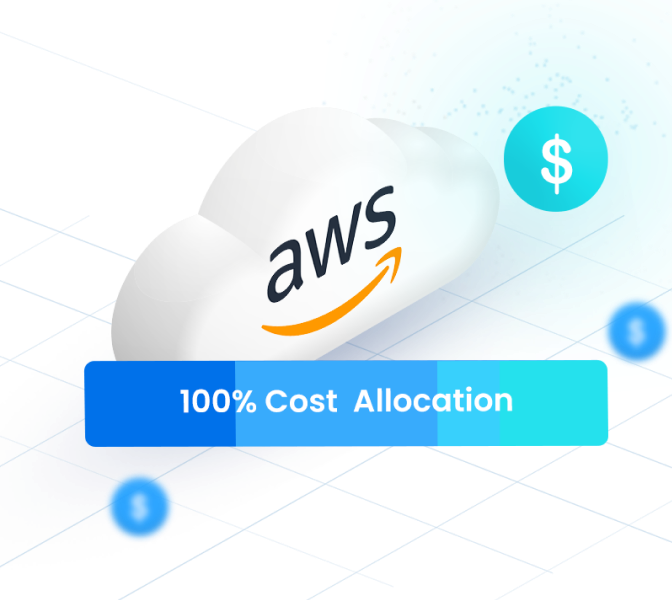- Blog
- Cost Allocation & Reporting
- Are You Overspending On AWS?
Are You Overspending On AWS?
Last Updated: May 21, 2025, Cost Allocation & Reporting
Over half of IT budgets will be dedicated to the cloud by 2025, according to Gartner. Yet many teams have no idea how to benchmark their cloud spend. How much should the AWS bill be? Are you spending too much?
As startups and SaaS companies continue to focus on profitability and minimizing expenses, answering these questions is a high priority for finance teams.
With budgeting season in full swing, the AWS costs are often a big mystery. If you’ve ever asked any of these questions, this post is for you. We will share the best ways to identify if there’s opportunity to reduce your AWS costs.
How do I know if my AWS bill is high compared to other companies?
It’s difficult to benchmark your spending against other companies, because cloud infrastructure costs depend on any number of factors:
- Industry. Companies whose products require massive data processing (such as streaming, SaaS, financial services) will need to invest heavily in scalable cloud resources. On the opposite end of the spectrum, a company with relatively static web content and simple portals (perhaps, an ecommerce or healthcare company) would expect far lower costs.
- User base size. As the number of users increases, costs do as well.
- Location. Companies with a global presence face additional costs generated by latency issues, regional data transfer costs, and data localization laws.
- Cloud modernization. How you structure your cloud has significant implications to your total cloud costs. Organizations that migrated from on-premise without modernizing their architecture likely have significant excess costs.
- Product maturity. Companies currently investing in R&D for new products, especially those leveraging advanced technologies like AI and ML, will see higher cloud costs.
As many of these factors are subjective or difficult to precisely measure, knowing for sure whether you’re spending too much or not enough is no mean feat.
5 ways to find out if you are overspending
Unfortunately, it’s typically not possible to simply compare your AWS costs against a chart to determine if you’re overspending. But the good news is that there are some quick ways to dig into the question and find out whether you are paying too much.
#1: Learn the AWS pricing basics
There are four types of cloud pricing to understand:
On-Demand is the most flexible compute available, but the most expensive. You simply tell AWS what kind of cloud resources you need, at the moment that you need them.
Reserved Instances (RI) offer a substantial discount (up to 75% off On-Demand), but the least flexibility. Standard RIs require a commitment to a specific type of compute (instance family, region, operating system…).
Savings Plans (SP) offer discounts (up to 72% off On-Demand) in exchange for a commitment to using a certain amount of compute over 1 or 3 year periods. They offer additional flexibility compared to RIs, and are automatically applied by AWS to the spend that will result in the greatest discount.
The Ultimate Guide to AWS Commitments
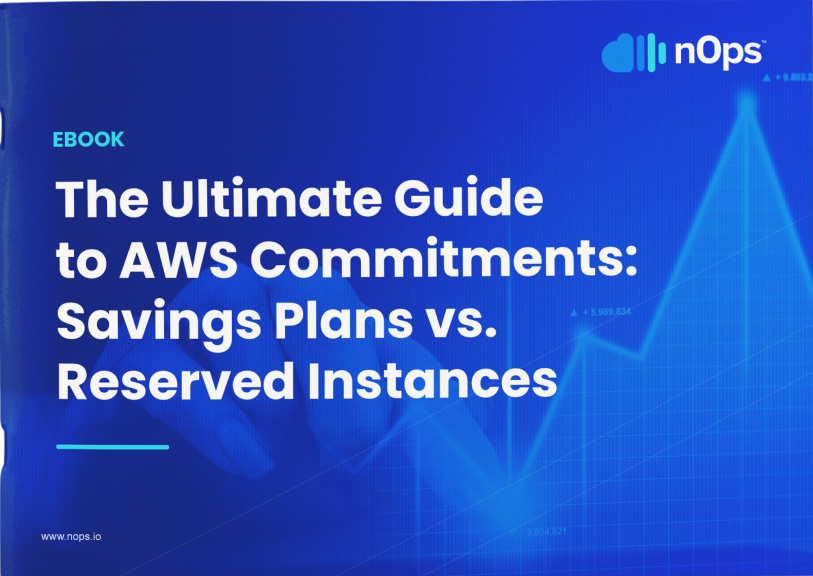
Spot instances are spare AWS capacity (On-Demand) that users can purchase at a heavy discount. The trick is that AWS may need the capacity back at any time — potentially disrupting workloads if not managed properly.
Here are a few warning signs that can indicate your AWS bill is too high.
1. Not enough compute on discounts. Due to spikes in usage, we find that most companies are able to cover around 40-50% of their usage with a commitment such as a Savings Plan. If you’re covering significantly less, you may be missing out on potential discounts.
2. Unused commitments. Savings Plans operate on a use-it-or-lose-it basis, potentially leading to a lot of unused or wasted capacity over the term length.
3. Siloed usage. One of the benefits of Savings Plans is that they can apply to other accounts in your organization, not just in the purchaser’s account. But the flipside is that different departments or teams making separate purchase decisions can lead to redundant services.
#2: Review your Cost and Usage Reports (CUR) in AWS Cost Explorer
By regularly reviewing your detailed used and cost reports in Cost Explorer (the tool provided by AWS), you can spot trends, spikes, cost drivers and anomalies in your spending — and investigate why they occurred.
Here are a few practical tips to get started slicing and dicing your CUR data.
1. Enable Cost Explorer. This can be done under Billing in the AWS Console. After you enable the tool, AWS prepares the data about your costs for the previous 13 months, and then calculates the forecast for the next 12 months. The current month’s data is available for viewing in about 24 hours, with the rest of the data taking longer. Once enabled, Cost Explorer updates your cost data at least once per day.
2. Compare forecasted costs against actual costs. From the overview dashboard, you can take a look at the summary to determine whether your usage and cost align with expectations.
3. Filter by cost type. Typically, EC2 followed by RDS and S3 are the largest expenses on the CUR. You can also group data by account, region or tags to find out which types of usage are driving costs.
4. Understand the Other category. The EC2-Other category includes charges related to EC2. The most important charges included are EBS volumes and snapshots, elastic IP addresses, NAT gateways, and data transfer.
5. Use a third party tool. Third-party tools can help analyze your AWS data and summarize the most important takeaways for you. For example, nOps has created a centralized platform for managing your AWS infrastructure and monitoring all AWS resources. It’s free and easy to see historical cloud billing data in interactive and visual dashboards instead of reviewing thousands of rows of data.
#3: Tag resources for greater visibility
Tags help break down and track cloud costs with more granularity. They involve attaching metadata in the form of tags to cloud resources. A tag typically consists of a “key” and a “value”, for example {“Environment”: “Production”}, {“Project”: “Orion”}, or {“Team”: “Platform”}.
Finance and engineering teams can work together to implement a tagging system, so that it’s easy to track and identify each cloud expenditure with (1) a precise cost, and (2) revenue and benefit to the customer. As a result, it becomes much easier to calculate cost-to-revenue and the financial efficiency of each cloud project.
If you’re running into problems with untagged and mistagged resources, you can also use a third-party tool like Business Contexts to help allocate your AWS spend more efficiently.
# 4. Ask whether your team is taking advantage of Spot discounts
Spot instances, discounted computing capacity offered by AWS, can greatly reduce your EC2 costs. However, many engineering teams fear Spot because it can be taken away at any time, potentially disrupting important workloads.
Some of the most important considerations for using Spot discounts include:
1. Spot isn’t as unreliable as people think. Most of the organizations we’ve talked to believe Spot terminates at an alarmingly higher rate than it actually does (50% of the time!?) — but the reality is that less than 5% of Spot instances are terminated in any given month.
2. Applications can be designed to be fault-tolerant. By designing applications to save state and move to other instances when necessary, Spot interruptions don’t have to be problematic.
3. Commitments can only cover about half of your spending. Due to spikes in usage, from a cost-optimization point of view, it’s only advisable to cover about half of your spending with commitments. That means that Spot is the only other viable option for getting discounts on more of your compute.
If your team doesn’t have dedicated resources to manage Spot usage, you can consider delegating the work to a tool. By automating the lifecycle of Spot instances, a tool can help make it easier to save while ensuring reliability.
# 5. Look into cloud cost optimization platforms
If you’re currently wondering which cloud cost optimization tool or solution can help you find and eliminate overspending, consider downloading the Buyer’s Guide to Cloud Cost Optimization Tools.
It covers everything you need to know about picking the right cloud cost tool — the most important features to consider, technical terminology demystified, and purchasing checklist.
About nOps
nOps delivers you comprehensive cloud cost savings, while freeing up your time to focus on building and innovating. A few of the benefits include:
Cost Savings. Our AI has real-time awareness of the Spot market, your existing commitments, and your changing usage. It automatically schedules the optimal instance types for your workloads, balancing between Compute SP and Spot to save you the most money.
Effortless onboarding. Just plug in your Batch, ASG, EKS, or other compute-based workload to start saving effortlessly.
Complete solution. We offer all of the features discussed above — no need to sign up for additional tools or subscriptions.
No upfront costs. It’s often said that you can only pick two out of three: good, fast, and cheap. We created nOps to defy this belief. We receive only a small percentage of your savings, meaning that you only save when you sign up.
nOps is entrusted with over a billion dollars of AWS spend, and the platform was recently ranked #1 in G2’s cloud cost management category. Join our customers saving up to 50% by booking a demo today!



